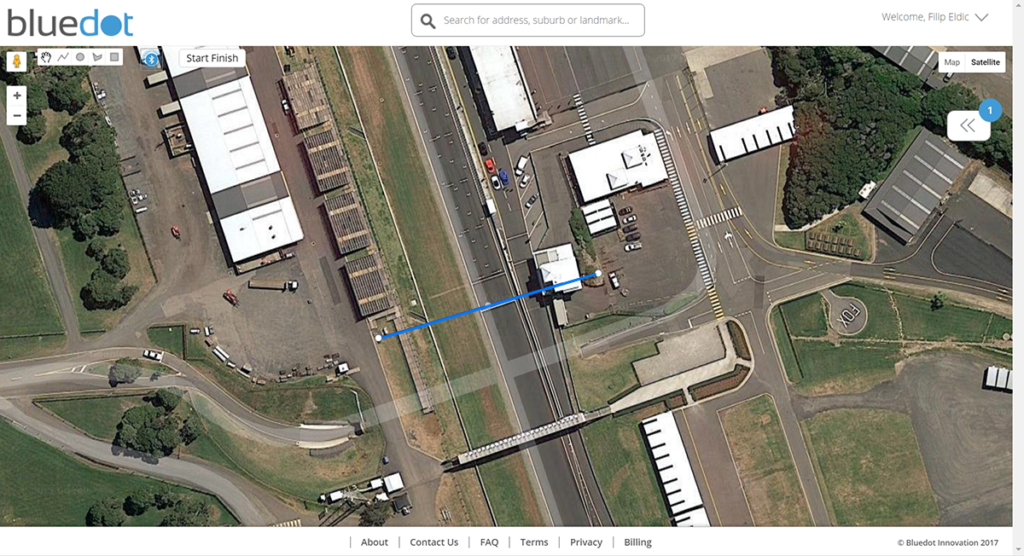
Bluedot Goes Car Racing Across the Geoline™
Bluedot was founded based on a crazy idea – high accuracy geofencing that is 20x more accurate than any other technology on the planet, that does not need external hardware, such as beacons, to function and that does not drain the battery like GPS.
Building technology that can support crazy moonshots is what we are all about. Bluedot’s technology lets us power ambitious ideas for our clients, from location based payments, super accurate engagement and marketing, home automation and many others.
So, if our technology can power some crazy, previously impossible solutions for our clients, it could surely assist me in doing some crazy stuff personally as well, right?
This is where the harebrained idea of using Bluedot’s technology to measure how fast I can go around a race track in a car came from. I am a hardcore racing fan and have always loved watching any form of car and bike racing. I was lucky enough to participate in a private track day at the beautiful seaside race track of Phillip Island, where the Australian Moto GP is held every year.

As I was preparing for the track day, I thought it would be awesome if we could put our technology to the ultimate test and do the impossible – use a mobile geofencing technology to measure my lap times and terminal speed at some corners. While most geofencing technologies require a user to enter into and dwell in a geofence for some time before and action is triggered (due to the risk from accidental triggers as a result of their inaccuracy), ours is not only instantaneous, but also much more accurate.
Setting the Stage
So the night before I decided to set up some locations using Bluedot’s patented Geoline™ technology and use them to measure my driving performance under extremely difficult circumstances – extremely high speeds. So, I set up some simple zones like this tripwire at the start/finish line of the race track:

Before I would go onto the track I would start up a testing application containing the latest version of the Bluedot Point SDK on my iPhone 6s and place the phone in the center console storage box of my car, out of sight and out of mind. The idea was that the Bluedot SDK would be able to pick up the exact moment I crossed the line and I would be able to measure the time between laps as well as how fast I was traveling when crossing the line.
If It’s Crazy and It Works, It’s Not Crazy
After a long day of racing, I went to check if my crazy idea had worked. I was amazed to see the following results:

Our technology managed to consistently record the timestamp of me crossing the thin Geoline™ lap after lap. I was able to learn that my best lap time that day was 2 minutes and 8 seconds. But the insights didn’t stop there. Since Bluedot technology also captures device speed, I was also able to learn that I crossed the finish line at 176 feet per second (53.74 meters per second). This translates to 120 miles per hour (193.46 kilometers per hour).
Extending this feature to the Geoline™ technology that I had placed at different marks on the track, I discovered that I entered turn 1 at 102.5 miles per hour (164.98 kilometers per hour). This made me realize that I was quite slow through the tighter corners in the circuit and helped me uncover perhaps the most profound revelation of all–that I am far from a professional racing driver. But most importantly, I was able to learn that crazy ideas can come true and that a smartphone can trigger any action when crossing a thin line traveling at insane speeds.
Regardless if it’s using our technology to time myself driving around racetracks, having your phone know when you arrive to a drive-thru window to pick up your order and automate that experience, charge location based payments as someone drives into a parking lot or even unlock your house as you approach the front doorstep, crazy is now possible.
At Bluedot, we will keep building crazy products that can turn out-there ideas into reality. But please make sure that as you read this, you do not in any way try to replicate this test, which was conducted on a closed race course, with professional supervision and all possible safety precautions taken.
Here is to moonshots…